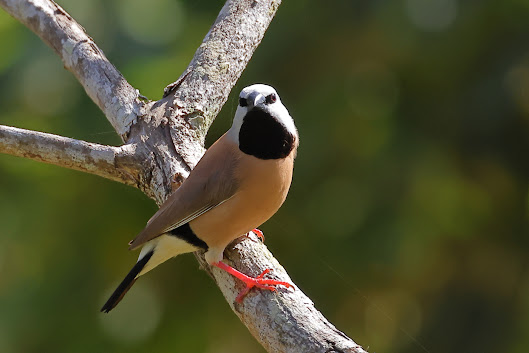But it's brown, why's it called a Black Butcherbird? I'm glad you asked. In North Queensland - but not too far north - Cracticus quoyi race rufescens comes with either black or rufous young, in the same nest sometimes. The rufous birds change to black in their second year (note black emerging on bird's left wing. They'll also stick around and help their parents feed the next generation.
But it's brown, why's it called a Grey Teal? I'm sorry you asked, because I've no idea. Possibly because calling it brown would confuse it with Chestnut Teal. The species confuse themselves and others by hybridizing sometimes.
But it's black, why isn't it called the Yellow-streaked-necked-male Bittern? Ha! They get it right sometimes, though the female isn't really very black.
Don't ask me how the Darter managed to escape the colour determinists, though it did get saddled with the tag Snake-bird, which, I'm pleased to say, nobody has ever used in my experience. I'd much rather go for Very Twisty Neck Bird, but that's a bit colourless.
And there's obviously too much white everywhere and it's such a boring colour anyway the colour must come from a really really exciting name, such as Intermediate Egret. Not Great or Little or Reef. All too dull, dull, dull. Intermediate, now that's a name with zing. Like a Bill Shorten zinger! Talk about colourful. But actually something in this picture does bring him to mind ...
Subscribe to:
Post Comments (Atom)
Lament for southern Black-throated Finches
Hollow logs for at risk birdies? Nature's nest boxes if you please Oh, such a clever wheeze So gather in twos and threes? Hundreds you w...

-
Hollow logs for at risk birdies? Nature's nest boxes if you please Oh, such a clever wheeze So gather in twos and threes? Hundreds you w...
-
White-faced Heron stands up and begs picture be taken at Tyto. The birds can develop some trust in people, but I've never found any aro...
-
Who gives way on footbridge, Yellow-spotted Monitor or unspotted bird watcher? Naturally, dinkum locals have right-of-way. I step aside, Spo...








No comments:
Post a Comment